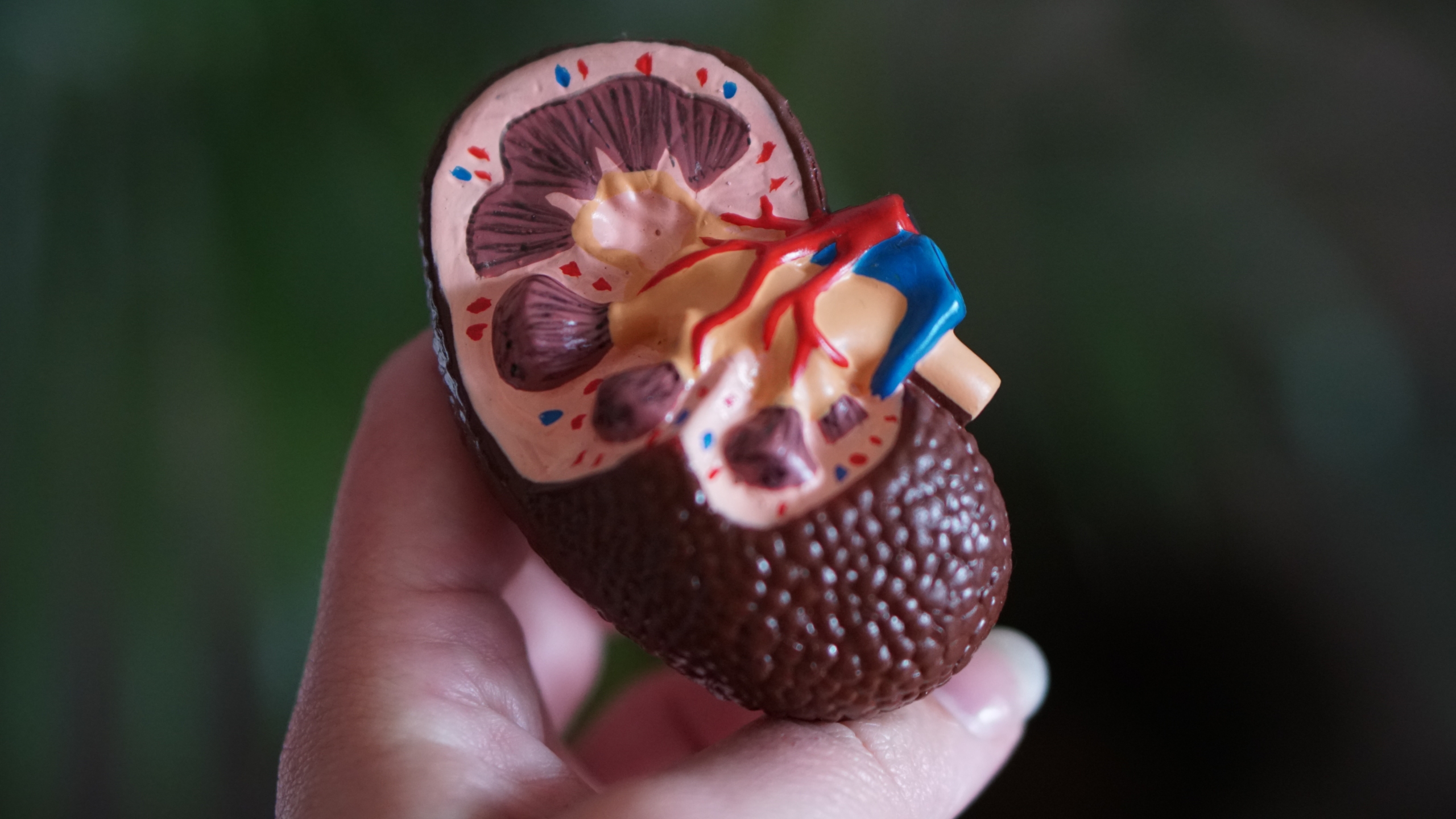The human renal system is responsible for not only filtering blood of impurities, it is also responsible for maintaining the acid base balance within very tight tolerances and discarding toxins and by products of cellular metabolism via urine. It consists not only of the kidneys but also the ureters, urinary bladder and the urethra.
The nephron is the umbrella term for the functional units of the kidney itself. It is located near the border of the cortex (outer portion) and the medulla (inner portion). As blood enters the kidney via the renal artery, it branches off into smaller blood vessels. The afferent arteriole allows blood to enter the glomerulus and the elevated pressure of the blood forces the fluid portion of the blood to enter the glomerular capsule which is located within Bownman’s Capsule. Ultrafiltration of the blood occurs in this kidney structure. Form there, the fluid drains into the Proximal Convoluted Tubule via the efferent arterioles while the urine drains from Bowman’s Capsule via the ureters and eventually arrive at the Urinary Bladder The next stop for the blood portion is peritubular capillaries, where water and solutes are reabsorbed if necessary and then eventually the Loop of Henle where reabsorption of water and Sodium Chloride occur. Lasix (Furosemide) works on the Loop of Henle to assist with diuresis. The Loop of Henle then turns into the Distal Convoluted Tubule. The ureters then transport urine the to Urinary Bladder where urine is stored and eventually drained into the Urethra which allows the urine to exit the body.
The kidneys are very sensitive to blood flow disruptions and therefore urine output is a very accurate indicator of urinary blood flow as well as hydration status. Normal Urine Output in adults is approximately 0.5-1 ml/kg/hr and approximately 1-2 ml/kg/hr in peds under 30 kg when the patient is adequately hydrated and the kidneys are receiving adequate amounts of blood flow. Glomerular Filtration Rate (GFR) is a very reliable indicator of kidney function with normal ranges of 90-120 ml/min. The GFR rate will gradually decrease with age as overall kidney efficiency decreases. GFR is also normally higher in African Americans due to increase muscle mass and Creatinine generation. Another test frequently used to assess kidney function is the Blood Urea Nitrogen (BUN) and Creatinine (Cream) as both are filtered out via the kidneys. Normal BUN levels range from 8-23 and is more specific for hydration status while Creatinine is more specific for actual assessment of renal function and the normal Creatinine range is 0.6-1.2. The BUN to Creatinine Ratio ranges from 10:1 to 20:1 and can assist the provider with determining whether the issue is being caused by hydration status or overall renal function.
Kidney injuries can largely be divided into three categories:
Prerenal, which is most common and can be caused by disorders like Dehydration, Congestive Heart Failure, Sepsis, Hypovolemia, Third Spacing of Fluid, Heart Rhythm Disorders or Certain Medications. BUN/Crea Ratio is usually Increased (exl. 30:1)
Intrarenal, which can be caused by Acute Tubular Necrosis (ATN), Glomerulonephritis, Intestinal Nephritis or Contrast Media Infusion. BUN/Crea Ratio is often decreased (ex. 7:1)
Post renal, which is often caused by Renal Stones or Calculi, Blood Clots, Enlarged Prostate or Tumors BUN/Crea Ratio is usually normal (ex. 10:1 to 20:1)
Regardless of underlying cause, the overall goal of any acute kidney injury or dysfunction is to attempt to identify the cause and elevate the Glomerular Filtration Rate back to within normal ranges.
If unsuccessful or unidentified, acute kidney injury can lead to Chronic Kidney failure which is often treated with either Hemodialysis or Peritoneal Dialysis. Hemodialysis occurs 3 times as week and usually involves 3-4 hours of hemodialysis per visit in which the patient’s blood is removed from their body via an AV Graft or Fistula and filtered and/or supplemented via an external dialysis machine and returned to the body of the individual. Peritoneal Dialysis if usually performed daily and is thought to be easier on the body as it occurs more frequently and over a longer period of time, often 6-8 hours daily. It is often performed at home nightly and involves instilling Dialysate into the abdomen multiple times and allowing the impurities to diffuse into the peritoneum and additives to diffuse into the blood vessels of the patient via the same peritoneal membrane. While often this form of dialysis is easier on the body, if performed at home, there is an increased risk of infection due to the fact that it is being done in the home setting. A third type of dialysis is Chronic Renal Replacement Therapy (CRRT) and is usually indicated for those patients who cannot tolerate either Hemodialysis or Peritoneal Dialysis and is most often done in the inpatient setting or in specialized outpatient locations.
Regardless of the cause of Renal injury or whether the injury is thought to be acute or chronic, the overall goals of treatment is to increase kidney function and prevent further insult to the Renal System itself. Two of the most common long term causes of Acute Kidney Injury and Chronic Renal Failure is uncontrolled systemic hypertension and uncontrolled diabetes. If the individual is able to keep these two variables under some form of consistent control, the incidence of overall kidney injury as well as neurologic injury is greatly decrease.

